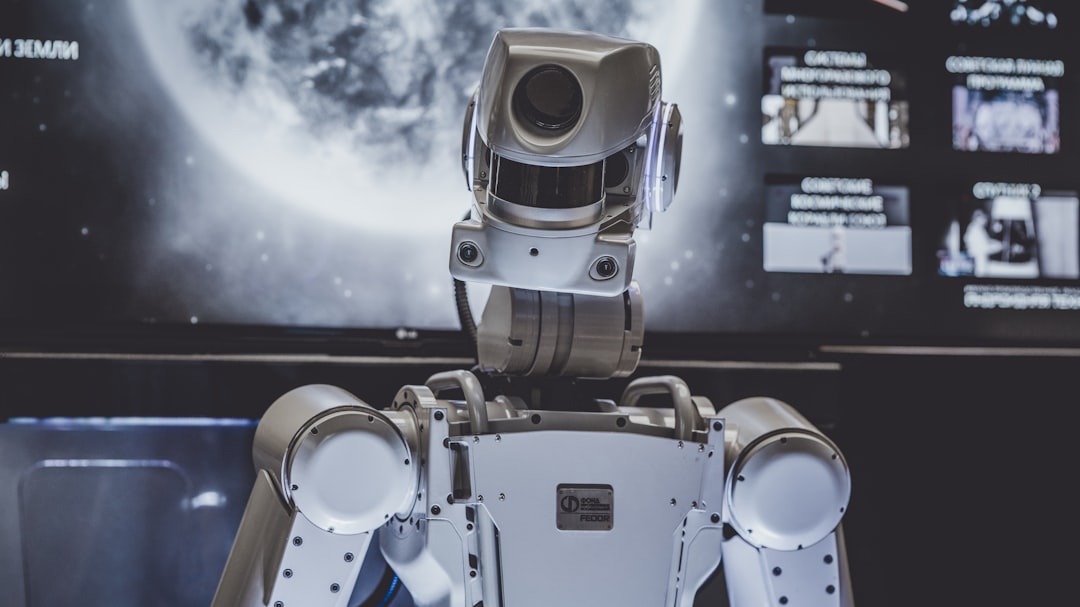In an era where urbanization is rapidly increasing, traffic congestion has become a pressing issue for cities worldwide. The rise in vehicle ownership, coupled with inadequate infrastructure, has led to gridlock situations that not only frustrate commuters but also contribute to environmental degradation and economic inefficiencies. To address these challenges, innovative solutions are being developed, and one of the most promising is the application of artificial intelligence (AI) in traffic congestion prediction.
By harnessing the power of AI, cities can analyze vast amounts of data to predict traffic patterns, optimize routes, and ultimately enhance the overall commuting experience. AI-driven traffic congestion prediction systems utilize machine learning algorithms and data analytics to process real-time traffic data, historical trends, and various external factors such as weather conditions and special events. These systems can provide accurate forecasts of traffic conditions, enabling city planners and commuters alike to make informed decisions.
As we delve deeper into this topic, we will explore how AI is revolutionizing traffic management and the implications it holds for the future of urban mobility. AI systems are revolutionizing industries, for more information visit AI systems.
Key Takeaways
- AI-driven traffic congestion prediction uses advanced algorithms to analyze real-time traffic data and predict congestion patterns.
- Real-time traffic data analysis is crucial for understanding current traffic conditions and identifying potential congestion areas.
- Understanding traffic congestion patterns helps AI algorithms to predict future congestion and recommend alternative routes.
- AI-driven congestion prediction for alternative routes can help drivers avoid traffic jams and reach their destinations faster.
- The benefits of using AI for traffic congestion prediction include reduced travel time, fuel savings, and improved overall traffic management.
Real-Time Traffic Data Analysis
At the heart of AI-driven traffic congestion prediction lies the ability to analyze real-time traffic data. This data is collected from a multitude of sources, including GPS devices in vehicles, traffic cameras, sensors embedded in roadways, and even social media platforms where users report traffic conditions. By aggregating this information, AI systems can create a comprehensive picture of current traffic conditions across a city or region.
The analysis of real-time data allows for immediate insights into traffic flow and congestion levels. For instance, machine learning algorithms can identify patterns in the data that indicate when and where congestion is likely to occur. This capability is particularly valuable during peak travel times or in response to unexpected incidents such as accidents or road closures.
By continuously monitoring and analyzing traffic data, AI systems can provide timely alerts to drivers, helping them avoid congested areas and choose alternative routes.
Understanding Traffic Congestion Patterns

Understanding the underlying patterns of traffic congestion is crucial for effective prediction and management. AI algorithms excel at recognizing these patterns by processing historical data alongside real-time inputs.
For example, an AI system might discover that certain intersections consistently experience heavy congestion during weekday mornings due to commuter traffic. By recognizing these recurring patterns, city planners can implement targeted interventions such as adjusting traffic signal timings or enhancing public transportation options in those areas. Furthermore, AI can also take into account external factors such as weather conditions or local events that may influence traffic flow, providing a more nuanced understanding of congestion dynamics.
AI-driven Congestion Prediction for Alternative Routes
One of the most significant advantages of AI-driven traffic congestion prediction is its ability to suggest alternative routes for drivers. When congestion is detected on a primary route, AI systems can quickly analyze nearby roads and recommend less congested paths based on real-time data. This capability not only helps individual drivers save time but also alleviates pressure on heavily trafficked roads.
AI algorithms can evaluate multiple factors when suggesting alternative routes, including distance, estimated travel time, and current traffic conditions. Additionally, these systems can learn from user behavior over time, refining their recommendations based on preferences and historical choices. As a result, drivers receive personalized route suggestions that adapt to their unique commuting patterns.
This dynamic routing capability is particularly beneficial in urban environments where traffic conditions can change rapidly.
Benefits of Using AI for Traffic Congestion Prediction
The integration of AI into traffic congestion prediction offers numerous benefits that extend beyond mere convenience for drivers. One of the most significant advantages is the potential for reduced travel times. By providing accurate predictions and alternative route suggestions, AI systems can help minimize delays and improve overall traffic flow.
This efficiency not only enhances the commuting experience but also contributes to lower fuel consumption and reduced emissions.
With access to real-time data and predictive analytics, decision-makers can prioritize infrastructure improvements and public transportation enhancements in areas most affected by congestion.
This proactive approach fosters more sustainable urban development and helps create a more resilient transportation network.
Implementation of AI-driven Traffic Congestion Prediction

Implementing AI-driven traffic congestion prediction systems requires a multi-faceted approach that involves collaboration between technology providers, government agencies, and urban planners. The first step typically involves the deployment of data collection infrastructure, such as sensors and cameras, to gather real-time traffic information. Once this data is collected, it must be processed and analyzed using advanced machine learning algorithms capable of identifying patterns and making predictions.
Furthermore, successful implementation necessitates the integration of these systems with existing transportation management platforms. This integration allows for seamless communication between various stakeholders, including traffic management centers, emergency services, and public transportation operators. By fostering collaboration among these entities, cities can ensure that AI-driven predictions are effectively utilized to enhance overall traffic management strategies.
Challenges and Limitations of AI-driven Traffic Congestion Prediction
Despite the promising potential of AI-driven traffic congestion prediction, several challenges and limitations must be addressed for widespread adoption. One significant hurdle is the quality and accuracy of the data being collected. Inaccurate or incomplete data can lead to flawed predictions that may misguide drivers or city planners.
Ensuring that data collection methods are robust and reliable is essential for the success of these systems. Additionally, there are concerns regarding privacy and data security when it comes to collecting real-time information from vehicles and individuals. Striking a balance between leveraging data for improved traffic management while safeguarding personal privacy is a critical consideration for policymakers and technology developers alike.
Furthermore, as with any technology reliant on machine learning algorithms, there is always the risk of bias in predictions if the training data does not adequately represent diverse driving behaviors or conditions.
Future Developments in AI-driven Traffic Congestion Prediction
Looking ahead, the future of AI-driven traffic congestion prediction holds exciting possibilities as technology continues to evolve. One area of development is the integration of autonomous vehicles into existing traffic management systems. As self-driving cars become more prevalent on our roads, they will generate vast amounts of data that can be harnessed to improve congestion predictions further.
Moreover, advancements in edge computing could enable real-time processing of data closer to its source, reducing latency in predictions and enhancing responsiveness during peak travel times. Additionally, as cities increasingly adopt smart infrastructure solutions—such as connected traffic lights and intelligent road signage—AI systems will have access to even more granular data points that can refine their predictive capabilities. In conclusion, AI-driven traffic congestion prediction represents a transformative approach to managing urban mobility challenges.
By leveraging real-time data analysis and understanding complex traffic patterns, these systems offer valuable insights that can enhance commuting experiences while promoting sustainable urban development. As technology continues to advance, we can expect even greater innovations in this field that will shape the future of transportation in our cities.
AI-driven Traffic Congestion Prediction is a crucial tool for improving traffic flow and reducing congestion in urban areas. Real-time traffic data analysis plays a key role in this process, allowing for the prediction of congestion on alternative routes to help alleviate traffic jams. For more information on how AI and data analysis are shaping the future of transportation, check out this article on Metaverse and the Real World: Conferences and Events with Metaverse. This article explores the intersection of virtual reality technology and real-world applications, highlighting the potential for innovation in various industries, including transportation.
FAQs
What is AI-driven traffic congestion prediction?
AI-driven traffic congestion prediction refers to the use of artificial intelligence and machine learning algorithms to analyze real-time traffic data and predict congestion on roadways. This technology can help identify potential traffic jams before they occur, allowing for the optimization of alternative routes and the improvement of overall traffic flow.
How does AI-driven traffic congestion prediction work?
AI-driven traffic congestion prediction works by collecting and analyzing real-time traffic data from various sources such as GPS devices, traffic cameras, and mobile apps. Machine learning algorithms are then used to process this data and identify patterns that indicate potential congestion. By continuously analyzing and learning from new data, the AI system can provide accurate and timely predictions of traffic congestion.
What are the benefits of AI-driven traffic congestion prediction?
The benefits of AI-driven traffic congestion prediction include improved traffic management, reduced travel times, and enhanced overall transportation efficiency. By predicting congestion in real-time, authorities can proactively implement measures to alleviate traffic jams and provide alternative routes for drivers, leading to a smoother and more efficient traffic flow.
How accurate are AI-driven traffic congestion predictions?
AI-driven traffic congestion predictions can be highly accurate, especially when trained on large volumes of real-time traffic data. By continuously learning from new data and adjusting their predictions, AI systems can provide accurate and reliable forecasts of traffic congestion, helping drivers and transportation authorities make informed decisions.
What are the challenges of AI-driven traffic congestion prediction?
Challenges of AI-driven traffic congestion prediction include the need for high-quality and real-time data, as well as the complexity of modeling and predicting traffic patterns in dynamic urban environments. Additionally, ensuring the privacy and security of the data used for prediction is also a significant challenge that needs to be addressed.











Leave a Reply